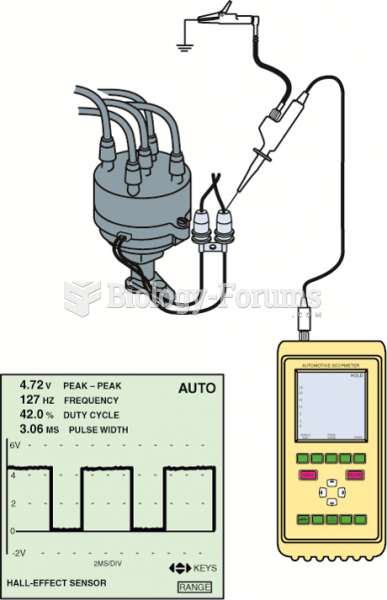|
|
|
There are actually 60 minerals, 16 vitamins, 12 essential amino acids, and three essential fatty acids that your body needs every day.
The immune system needs 9.5 hours of sleep in total darkness to recharge completely.
There are over 65,000 known species of protozoa. About 10,000 species are parasitic.
Inotropic therapy does not have a role in the treatment of most heart failure patients. These drugs can make patients feel and function better but usually do not lengthen the predicted length of their lives.
Blastomycosis is often misdiagnosed, resulting in tragic outcomes. It is caused by a fungus living in moist soil, in wooded areas of the United States and Canada. If inhaled, the fungus can cause mild breathing problems that may worsen and cause serious illness and even death.
 Booker T. Washington in his office at Tuskegee Institute, 1900. Washington chose a policy of accommo
Booker T. Washington in his office at Tuskegee Institute, 1900. Washington chose a policy of accommo
 (a) The connection required to test a Halleffect sensor. (b) A typical waveform from a Hall-effect ...
(a) The connection required to test a Halleffect sensor. (b) A typical waveform from a Hall-effect ...





